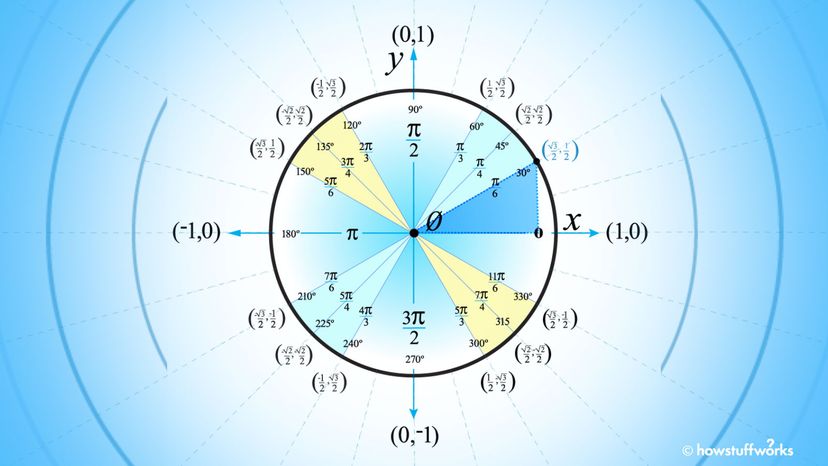
You probably have an intuitive idea of what a circle is: the shape of a basketball hoop, a wheel or a quarter. You may even remember from high school that the radius is any straight line that starts from the center of the circle and ends at its perimeter.
A unit circle is just a circle that has a radius with a length of 1. But often, it comes with some other bells and whistles.
Advertisem*nt
Contents
- Why Is the Unit Circle Important?
- Step 1: 4 Pizza Slices
- Step 2: 3 Pies for $6
- Step 3: 2 Square Tables
- Step 4: 1, 2, 3
- Angles in Degrees
- Using the Unit Circle in Practice
Why Is the Unit Circle Important?
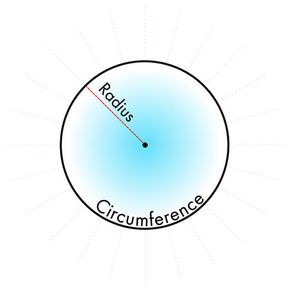
A unit circle defines right triangle relationships known as sine, cosine and tangent. These relationships describe how angles and sides of right triangles relate to one another.
Say, for example, we have a right triangle with a 30-degree angle, and whose longest side, or hypotenuse, is a length of 7. We can use our predefined right triangle relationships to figure out the side lengths of the triangle's remaining two sides.
Advertisem*nt
This branch of math, known as trigonometry, has everyday practical applications such as construction, GPS, plumbing, video games, engineering, carpenter work and air flight navigation.
To memorize a standard unit circle, we need to be able to recall three major components:
- Four quadrants
- 16 angles
- (x, y) coordinates for each of the 16 angles, where the radius touches the circle's perimeter
To help us, we are going to recall a trip to the Unit Pizza Palace. Take a few moments to memorize the following until you can recite it without looking:
- 4 pizza slices
- 3 pies for $6
- 2 square tables
- 1, 2, 3
Advertisem*nt
Step 1: 4 Pizza Slices
Imagine one whole pizza, cut into four even slices. In math we would call these four parts of the circle quadrants.
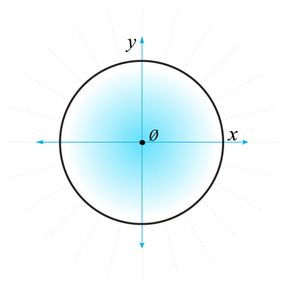
We can use (x, y) coordinates to describe any point along the outer edge of the circle. The x value or x-coordinate represents the distance traveled left or right from the center, while the y value or y-coordinate represents the distance traveled up or down.
Advertisem*nt
The x-coordinate is the cosine of the angle formed by the point, the origin and the x-axis. The y-coordinate corresponds to the exact value of the sine function for that angle.
In a unit circle, a straight line traveling right from the center of the circle will reach the circle's edge at the coordinate (1, 0). Here are the coordinates if the line went in the other directions:
- Left: (-1, 0)
- Up: (0, 1)
- Down: (0, -1)
The four associated angles (in radians, not degrees) all have a denominator of 2. (A radian is the angle made when taking the radius and wrapping it round a circle. A degree measures angles by distance traveled. A circle is 360 degrees or 2π radians).
The numerators start at 0, beginning at the coordinate (1,0), and count up counterclockwise by 1π. This process will yield 0π/2, 1π/2, 2π/2 and 3π/2. Simplify these fractions to get 0, π/2, π and 3π/2.
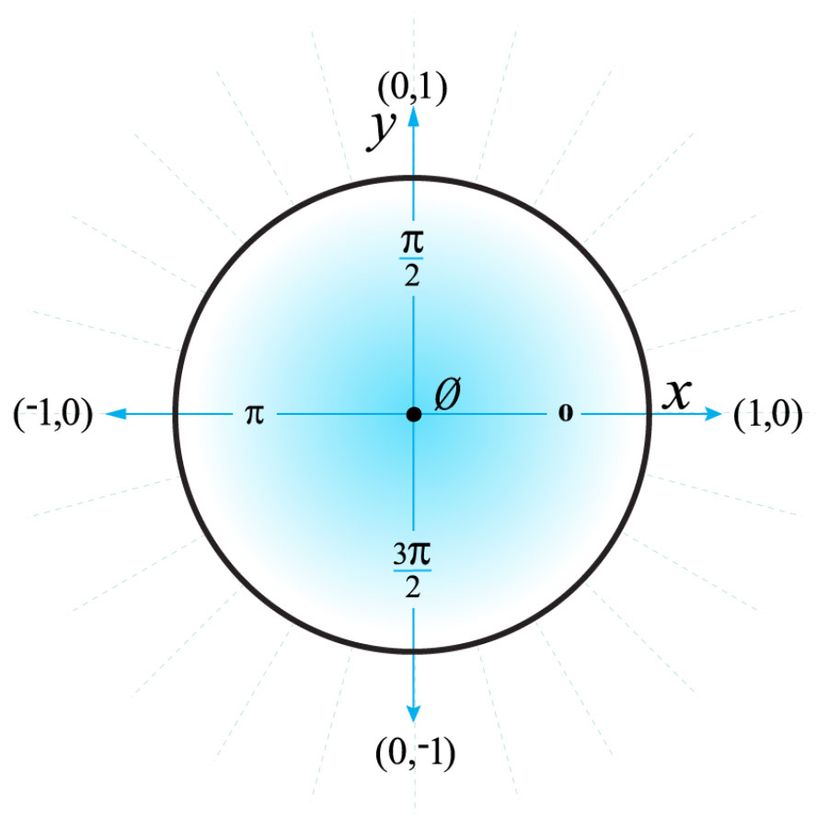
Advertisem*nt
Step 2: 3 Pies for $6
Start with "3 pies." Take a look at the y-axis. The radian angles directly to the right and left of the y-axis all have a denominator of 3. Every remaining angle has a numerator that includes the mathematical value pi, written as π.
"3 pies for 6" is used to recall the remaining 12 angles in a standard unit circle, with three angles in each quadrant. Each of these angles is written as a fraction.
Advertisem*nt
The "for $6" is to remind us that in each quadrant, the remaining denominators are 4 and then 6.
The trickiest part of this step is completing the numerator for each fraction.
In quadrant 2 (top left quarter of the circle), put 2, then 3, then 5 in front of π.
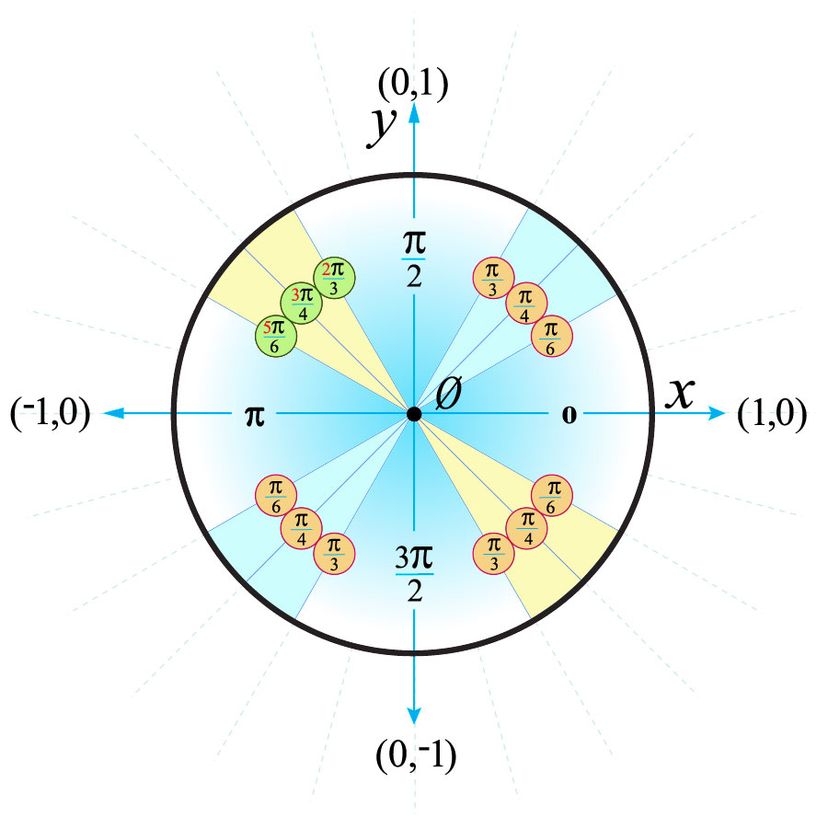
Your first angle in quadrant 2 will be 2π/3. This is easily calculated by adding together the 2 in the numerator and the 3 in the denominator, which equals 5.
Look at the angle straight across in quadrant 4 (bottom right quarter of the circle). Place this 5 in the numerator in front of π. Repeat this process for the other two angles in quadrants 2 and 4.
We'll repeat the same process for quadrants 1 (top right) and 3 (bottom left). Remember, just like x is the same as 1x, π is the same as 1π. So we are adding 1 to all the denominators in quadrant 1.
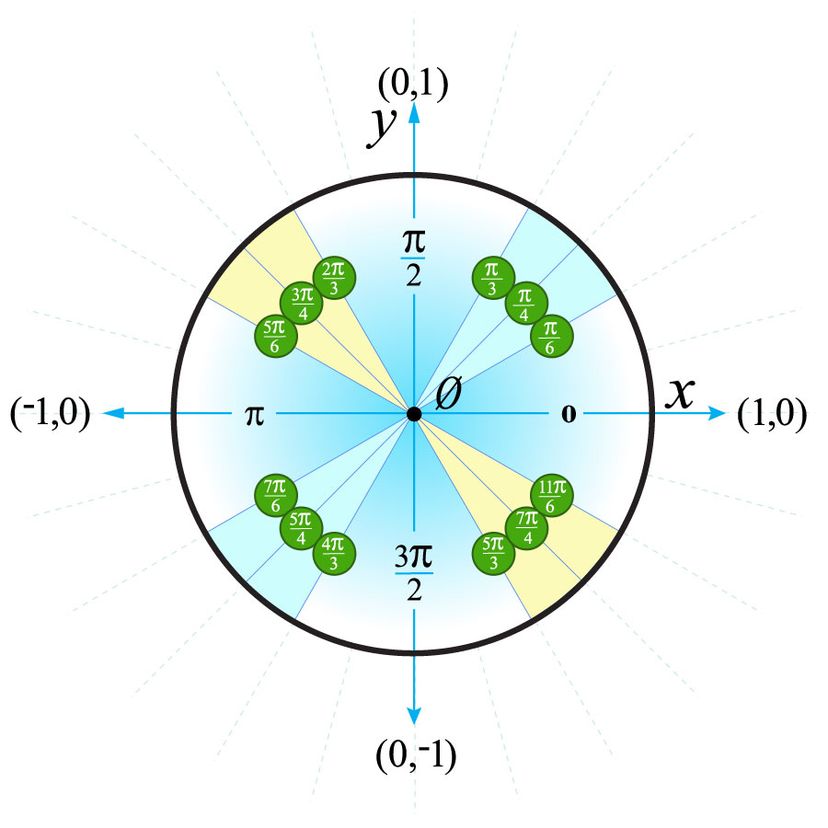
The process for listing angles in degrees (instead of radians) is described at the end of this article.
Advertisem*nt
Step 3: 2 Square Tables
The "2" in "2 square tables" is to remind us that all the remaining 12 coordinate pairs have a denominator of 2.
"Square" is to remind us that the numerator of every coordinate includes a square root. We are only starting with quadrant 1 to simplify things. (Hint: Remember that the square root of 1 is 1, so these fractions can be simplified to just 1/2.)
Advertisem*nt
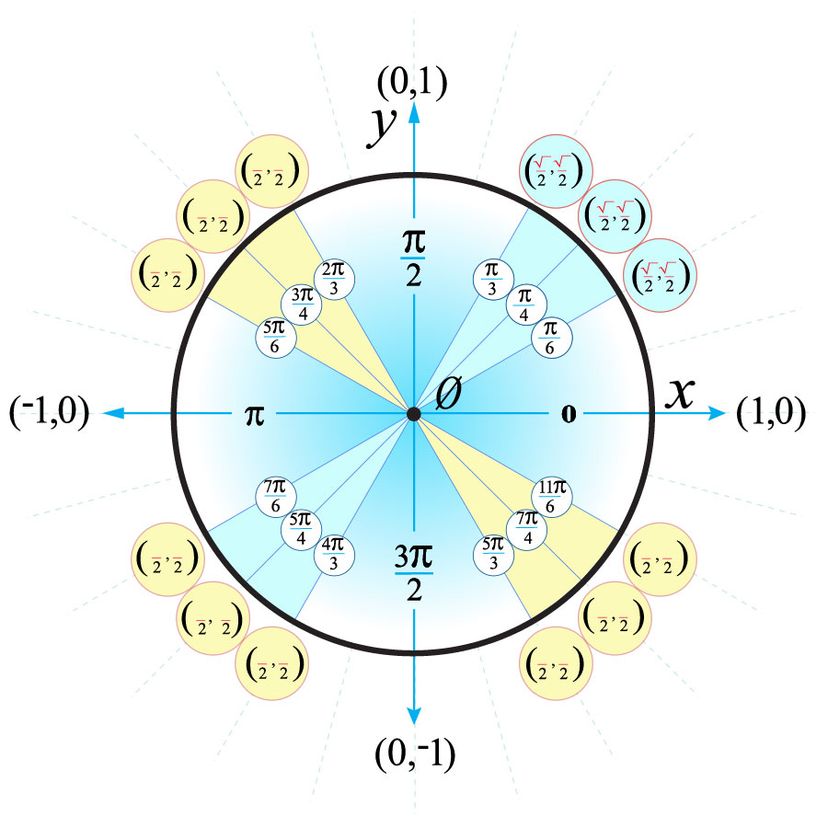
Step 4: 1, 2, 3
The "1, 2, 3" shows us the succession of numbers under each square root. For quadrant 1's x-coordinates, we count from 1 to 3, starting at the top coordinate and going down.
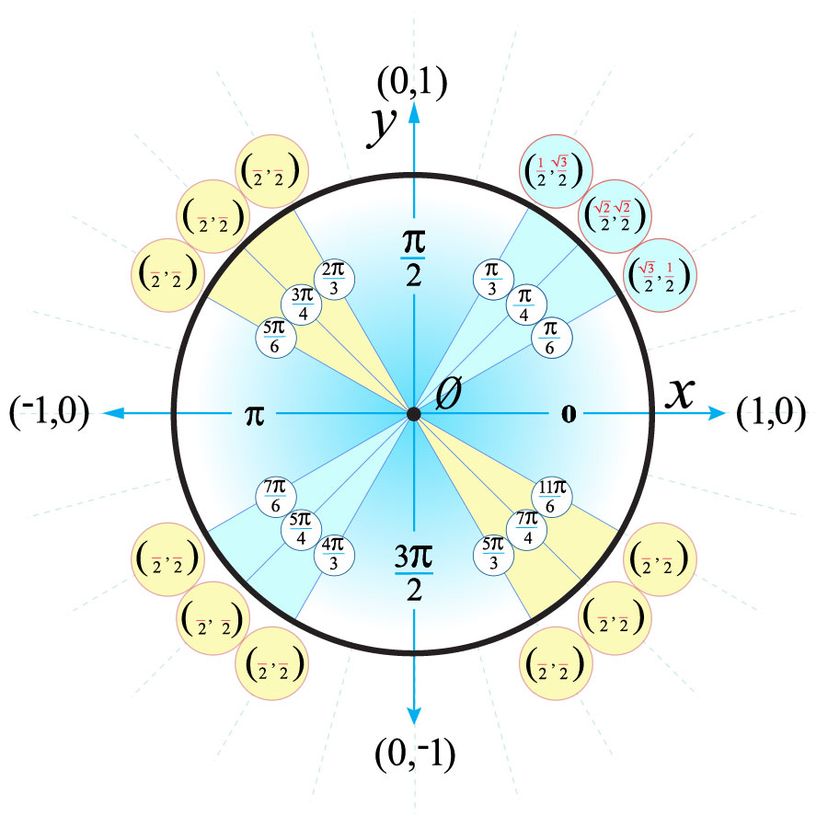
The y-coordinates have the same numerators, but count from 1 to 3 in the opposite direction, from the bottom to the top.
Advertisem*nt
Quadrant 2 has the same coordinates as quadrant 1, but the x-coordinates are negative.
Quadrant 3 switches the x- and y-coordinates from quadrant 1. All of the x- and y-coordinates are also negative.
Like quadrant 3, quadrant 4 also switches the x- and y-coordinates from quadrant 1. But only the y-coordinates are negative.
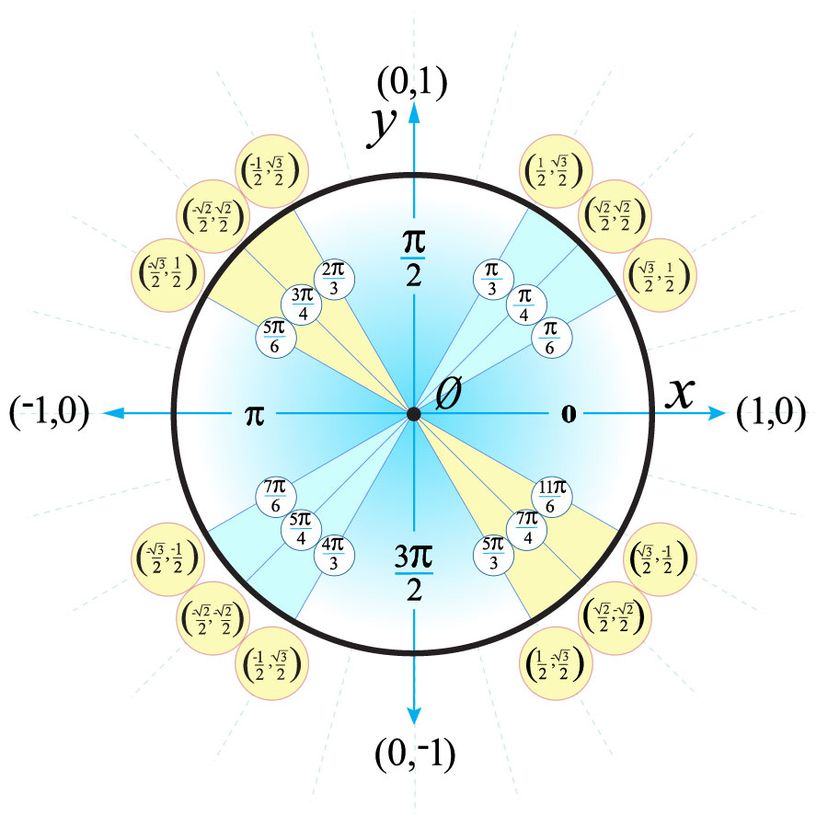
Advertisem*nt
Angles in Degrees
You may want to reference angles by degrees instead of radians. To do so, start at 0 degrees at coordinate (1,0). From there we will add 30, 15, 15 and then 30. In quadrant 1, we add 30 to 0 to get 30, add 15 to 30 to get 45, add 15 to 45 to get 60, and add 30 to 60 to get 90.
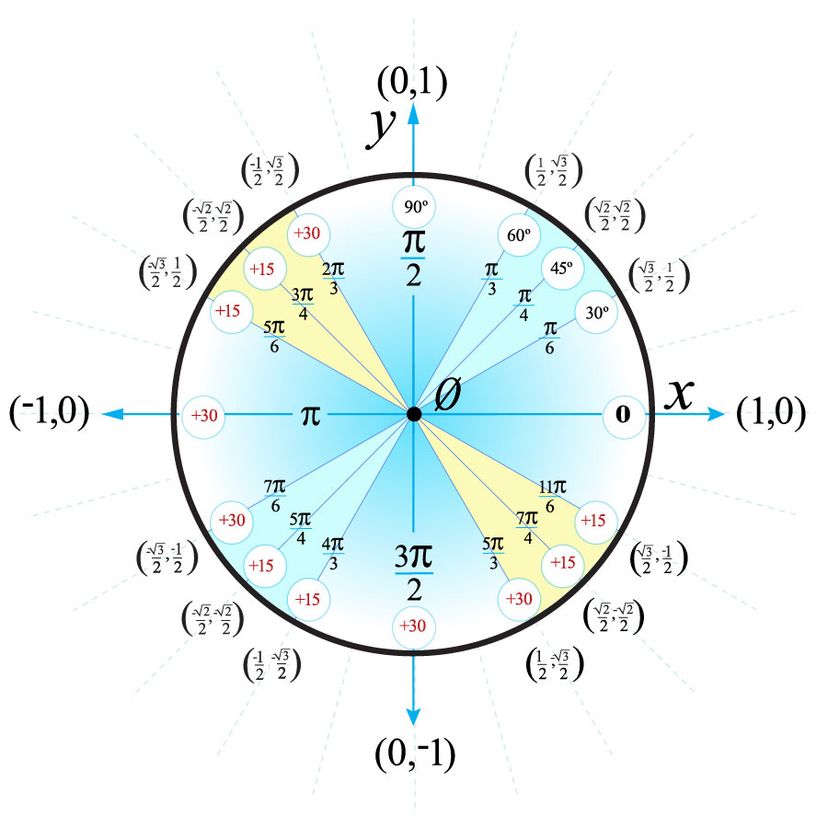
We then repeat the process for the remaining quadrants, adding 30, 15, 15, and 30 until we reach the end of the circle. So quadrant 4 will have angles ranging from 270 to 330 degrees (see figure 10).
Advertisem*nt
Using the Unit Circle in Practice
Remember, the unit circle can be used to find two unknown sides of a right triangle with a 30-degree angle and whose longest side, or hypotenuse, is a length of 7. Let's give it a try.
Take note of where 30° is on the unit circle. Use that line and the x-axis to create a triangle as follows.
Advertisem*nt
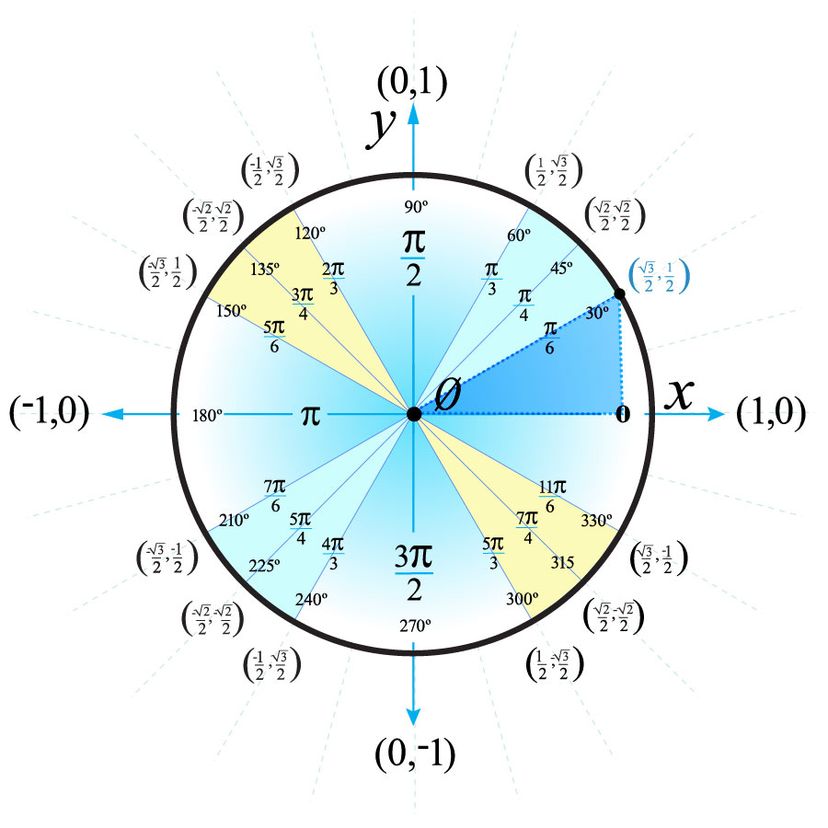
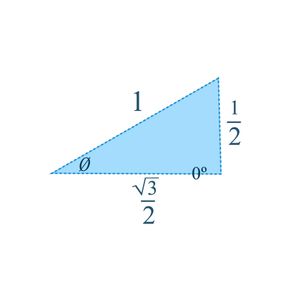
In a unit circle, any line that starts at the center of the circle and ends at its perimeter will have a length of 1. So, the longest side of this triangle will have a length of 1. The longest side of a right triangle is also known as the hypotenuse. The point where the hypotenuse touches the perimeter of the circle is at √3/2, 1/2.
So we know that the base of the triangle (on the x-axis) has a length of √3/2 and the height of the triangle is 1/2.
Another way to think about it is that the base is √3/2 times the length of the hypotenuse and the height is 1/2 times the length of the hypotenuse.
So, if instead, the hypotenuse is a length of 7, our triangle base will be 7 x √3/2 = 7√3/2.
The triangle will have a height of 7 x 1/2 = 7/2.
This article was updated in conjunction with AI technology, then fact-checked and edited by a HowStuffWorks editor.
Now That's Interesting
Trigonometry is thought to have been originally developed in the 1st century B.C.E. to understand astronomy, the study of stars and the solar system. It is still used in space exploration by the likes of NASA and private space transport companies.
Advertisem*nt
Frequently Answered Questions
What is 2π in the unit circle?
2π is equal to a complete revolution around the unit circle, or 360°.
What are the trig functions and how do they relate to the unit circle?
The primary trig functions are sine, cosine and tangent. On the unit circle, sine corresponds to the y-value, and cosine to the x-value of points. The unit circle provides a geometric representation of these functions as ratios of the sides of right triangles.